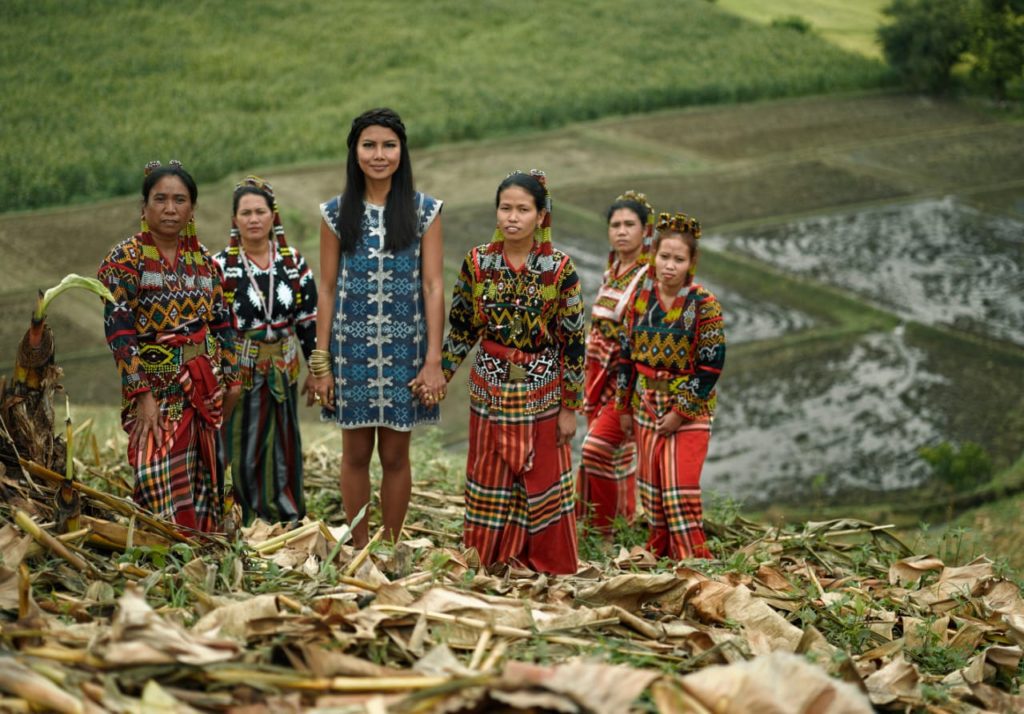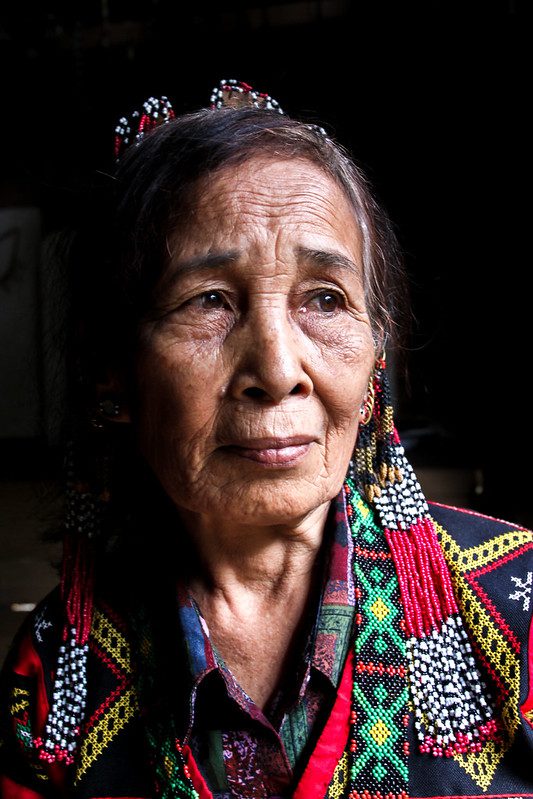No products in the cart.

The T’boli
📍Lake Sebu, Mindanao, The Philippines
This is a k’gal nisif with fandi n’dol, or a traditional embroidered blouse and sarong, used for special occasions by the T’boli women of Lamlahak, Lake Sebu, South Cotabato on Mindanao Island of the Philippines. On the blouse the cross-stitch and bands are called klikam, the headdress is called swat, and the heavy beaded girdle is the hilet.

The T’boli are an Austronesian ethnic group living in the southern highlands of Mindanao Island in the Philippines. They were shielded from outside influence until the American conquest of the Philippines in 1913. Before then their main points of contact were other polytheistic groups as well as Muslim settlers who appear throughout T’boli folklore.
The T’boli language, like most indigenous languages on Mindanao, is of the Western Malayo-Polynesian Austronesian family. They are largely subsistence farmers though they are best known for their tie-dyed abaca cloth (also known as Manila hemp) and metal industry. Their use of shifting cultivation, as well as the cultural tradition to abandon a house after there has been a death in it, means that houses, and even settlements, are often impermanent.

Unlike most groups on the island, many T’boli still commonly wear their traditional dress. Women wear a luwek (a large patterned shawl) over a tube sarong and a long sleeve blouse. Blouses worn for farming or manual labour tend to be simple and dyed dark blue or black, and in less labour intensive situations heavily embroidered blouses are worn. Sometimes these are worn with modern skirts. The most revered of the T’boli blouses is the shell covered k’gal binsiwit. Traditionally, for a woman to be properly dressed she must also wear jewellery. Shell earrings, chokers made of beads, and intricate necklaces are common.
The Filip+Inna Anya dress was embroidered by artisans in this T’boli community but on modern blue linen, and showcases their careful embroidery skills and use of shell beads.

Photo credits:
